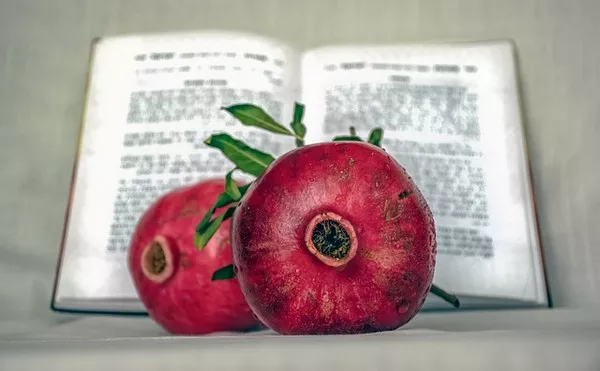Rosh Hashanah, the Jewish New Year, is a time of reflection, renewal, and celebration. It marks the beginning of the High Holy Days and is observed on the first two days of Tishrei, the seventh month of the Hebrew calendar. The interplay between Rosh Hashanah and Shabbat presents unique customs, observances, and meanings. This article explores when Rosh Hashanah falls on Shabbat, the significance of this occurrence, the rituals involved, and how the community celebrates.
Understanding Rosh Hashanah
Rosh Hashanah translates to “Head of the Year” in Hebrew. It is a time for self-assessment and spiritual awakening. This period is marked by a number of customs and traditions, including:
Shofar Blowing: One of the most significant rituals is the blowing of the shofar, a ram’s horn, which serves as a call to repentance.
Prayers and Reflection: Special prayers are recited, and the Jewish community engages in reflection about the past year and hopes for the coming one.
Festive Meals: Sweet foods, such as apples dipped in honey, are eaten to symbolize the desire for a sweet new year.
When Rosh Hashanah Falls on Shabbat
Rosh Hashanah can fall on any day of the week, including Shabbat. The Hebrew calendar is lunisolar, which means it is based on the cycles of the moon and the sun. The months of the Hebrew calendar are either 29 or 30 days long, which can lead to variations in the days of the week on which Rosh Hashanah occurs.
The next occurrence of Rosh Hashanah on Shabbat is in 5785, which corresponds to September 21-22, 2024. This specific alignment of dates raises important considerations in Jewish law and practice.
Significance of Rosh Hashanah on Shabbat
When Rosh Hashanah coincides with Shabbat, the significance deepens. This combination is not merely a scheduling coincidence; it has profound implications for observance and community life. Here are some key points to consider:
1. Spiritual Elevation
The combination of Rosh Hashanah and Shabbat is seen as a time of heightened spiritual awareness. Shabbat itself is a day of rest and spiritual renewal, while Rosh Hashanah is a time for reflection and new beginnings. Together, they create a powerful opportunity for introspection and connection with the divine.
2. Special Liturgical Adjustments
The liturgy for Rosh Hashanah on Shabbat includes special readings and prayers that acknowledge both the new year and the sanctity of Shabbat. The Torah reading for this day often features passages that highlight themes of creation, kingship, and divine judgment.
3. Impact on Rituals
Certain rituals are modified or enhanced when Rosh Hashanah falls on Shabbat. For example:
Shofar Blowing: Traditionally, the shofar is blown on Rosh Hashanah, but when it coincides with Shabbat, it is not blown in order to avoid the risk of carrying it in public domains, which is prohibited on Shabbat. This absence can create a feeling of anticipation and enhances the experience when shofar is blown the following day.
Prayers and Blessings: Additional prayers may be included to emphasize the unique nature of this occurrence, focusing on themes of peace, renewal, and divine mercy.
Cultural and Community Celebrations
The intersection of Rosh Hashanah and Shabbat fosters a unique atmosphere in Jewish communities. Here are some cultural and communal aspects to consider:
1. Community Gatherings
When Rosh Hashanah falls on Shabbat, it often leads to larger community gatherings. Families and friends come together for festive meals and prayers. The atmosphere is typically joyful, as individuals celebrate not only the New Year but also the blessings of Shabbat.
2. Culinary Traditions
Festive meals are a key component of the celebration. Foods that symbolize sweetness, such as honey cakes and pomegranates, are commonly served. The culinary traditions may vary by region, but the emphasis on sweet foods remains consistent, symbolizing hopes for a fruitful and happy new year.
3. Enhanced Family Rituals
Families may enhance their own rituals when Rosh Hashanah coincides with Shabbat. This may include lighting candles, reciting blessings, and sharing personal reflections about the past year. Engaging in these practices strengthens familial bonds and emphasizes the importance of community.
Challenges and Considerations
While the intersection of Rosh Hashanah and Shabbat presents numerous opportunities for celebration and reflection, it also poses challenges that require careful consideration:
1. Balancing Observances
One challenge is balancing the observances of Rosh Hashanah and Shabbat. For example, families must navigate the complexities of meal preparation while observing the prohibitions of Shabbat. Planning ahead is crucial to ensure that meals are prepared in advance.
2. Shofar Blowing
The absence of shofar blowing on Shabbat can lead to feelings of disappointment for some individuals. However, this presents an opportunity for reflection on the deeper meanings behind the rituals and encourages anticipation for the next day when the shofar will be blown.
3. Community Awareness
Communities must be mindful of the diverse ways individuals and families observe Rosh Hashanah and Shabbat. Providing educational resources and opportunities for discussion can help foster understanding and inclusivity.
See also: Where to Watch Notting Hill Carnival
Conclusion
When Rosh Hashanah falls on Shabbat, it creates a unique opportunity for spiritual reflection, community celebration, and culinary delight. The intersection of these two important occasions enhances their significance and fosters a deeper connection to tradition and faith. As individuals and families come together to celebrate, the themes of renewal, peace, and joy resonate strongly within the community. By embracing these moments of unity and reflection, participants can cultivate a deeper understanding of their faith and heritage, making each Rosh Hashanah an occasion to remember. As we look forward to future occurrences of Rosh Hashanah on Shabbat, may we carry the spirit of these celebrations into our daily lives, fostering a sense of connection, renewal, and joy in all that we do.
Related topics:

